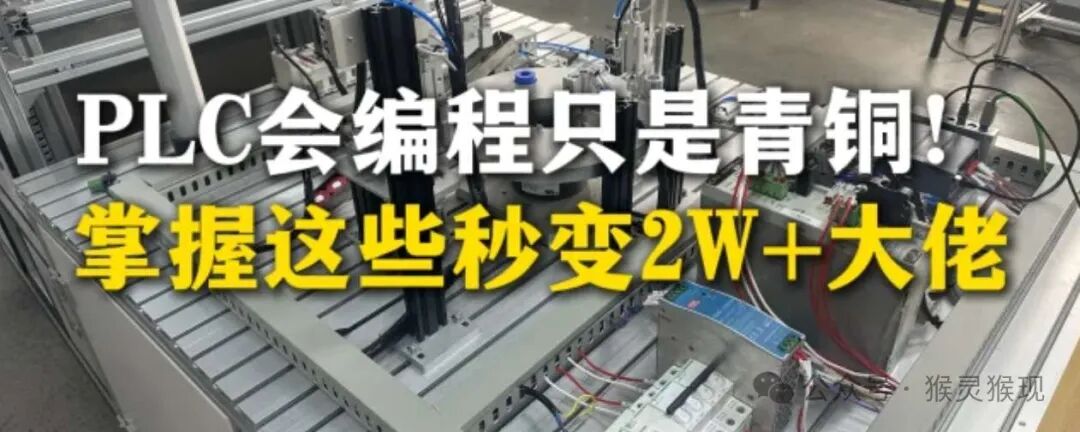
Intermediate Functions of PLC: Adaptive Process Parameters for More Stable Product Quality!
🔥 The Invisible Killer of Traditional Process Parameter Adjustment: The “Quality Trap” You Overlook!
Every time you change production batches, are you still manually adjusting parameters? Are you troubled by large fluctuations in product quality and low production efficiency?
Let me tell you a secret: Those top manufacturing companies have long abandoned traditional manual parameter adjustment methods and have turned to a process parameter adaptive technology that makes production smarter and more stable!
💡 Process Parameter Adaptation: The Emergence of “Artificial Intelligence” in PLCs
Imagine an experienced process engineer who can adjust production parameters in real-time based on subtle changes in raw materials, ensuring that every batch of products meets the best quality. The process parameter adaptive technology embeds this kind of “experience” into PLCs, making the equipment as smart as a human.
Here are its three core capabilities:
-
Real-time Monitoring: Capturing key data through sensors to detect changes in process status at any time.
-
Intelligent Calculation: Built-in algorithms analyze data and dynamically generate process parameters.
-
Automatic Execution: No manual intervention is required; the PLC automatically adjusts parameters.
Real Case: A high-end milk powder factory using this technology saw its product qualification rate increase from 92% to 99%, with a reduction in return rates by 80%, while raw material waste decreased by 40%!
⚙️ Three Core Technologies to Make Your PLC Smarter
1️⃣ Data Collection and Modeling: Laying the Foundation for Adaptation
**Data is king!** The first step in process parameter adaptation is to collect key data and build models. Just like training a newcomer, you need to familiarize them with the production process first.
-
Sensors: Real-time collection of multidimensional data such as temperature, pressure, and speed.
-
Data Modeling: Training mathematical models with historical data to find the best relationship between process parameters and product quality.
Case Insight: A paper mill established a model of humidity and paper thickness, achieving precise control of paper thickness and reducing waste rates by 30%!
2️⃣ Fuzzy Control Algorithm: Bringing Equipment Closer to “Human Logic”
Traditional PID control cannot handle the nonlinear changes of complex processes, while fuzzy control technology allows PLCs to make “ambiguous” decisions like a human.
-
Temperature slightly low? Heat it up a bit!
-
Pressure slightly high? Reduce it a little!
This “fuzzy” adjustment method makes the equipment more flexible, just like an experienced technician.
Real Case: A plastic molding factory reduced machine adjustment time by 50% and increased product qualification rates by 15% after using fuzzy control.
3️⃣ Self-Learning Function: Making Equipment Smarter Over Time
By introducing self-learning algorithms, PLCs can continuously optimize their adjustment strategies. For example:
-
Trend analysis based on historical data to predict future process changes.
-
Adjusting model weights based on actual production results to continuously improve control accuracy.
Stunning Fact: A precision electronics factory improved its production yield from 85% to 98% through self-learning functions, saving up to 5 million yuan annually!
🚀 Quick Start Guide: Unlocking Process Parameter Adaptation in Three Steps
Step One: Choose the Right PLC Model
Not all PLCs support process parameter adaptation. Here are some recommended models:
-
Siemens S7-1500: Supports fuzzy control and self-learning functions.
-
AB ControlLogix 5580: Suitable for complex process scenarios.
-
Mitsubishi Q/iQ-R Series: Comes with various advanced algorithm modules.
Step Two: Start Testing with a Single Process Module
Select a process module that has the greatest impact on product quality for a pilot test, such as:
-
Temperature control module in plastic molding
-
Mixing ratio module in beverage production
By introducing adaptive technology, observe the changes in process stability and product quality before and after.
Step Three: Optimize and Promote
-
Continuous Optimization: Continuously improve the model based on production data.
-
Gradual Promotion: Expand from the pilot module to the entire production line, and even across factories.
💼 Real-World Cases: Miracles of Process Parameter Adaptation
Case One: The “Golden Ratio” in Food Processing
A large food factory achieved consistency in taste by controlling key parameters such as sugar content and acidity through adaptive technology. The results:
-
Product taste consistency rate increased to 95%.
-
Customer satisfaction improved by 20%.
-
Saved about 100 tons of raw materials annually.
Case Two: Quality Revolution in High-End Manufacturing
A high-end automotive parts factory dynamically adjusted processing parameters by monitoring equipment vibrations and tool wear. The results:
-
Product qualification rate increased from 90% to 99%.
-
Tool lifespan doubled.
-
Saved 2 million yuan in equipment maintenance costs annually!
⚠️ Industry Insider: Why This Technology Is Rarely Mentioned?
The truth is shocking: Equipment suppliers are often reluctant to actively promote process parameter adaptive technology because it significantly reduces the need for equipment debugging, thus affecting their service revenue.
An industry insider admitted: “Once customers master this technology, their dependence on equipment debugging and maintenance decreases significantly, which is not good news for us.”
🔮 Take Action Now: Unlock Your PLC Potential
-
Assess the Current Situation: Download our free tool to analyze whether your production line is suitable for introducing process parameter adaptation.
-
Learn Core Technologies: Start practicing with one of the three core technologies mentioned in this article.
-
Share Your Results: Share your success stories with peers to promote industry progress together!
Limited Time Offer: The first 10 readers who comment and share their experiences will receive our exclusive “Process Parameter Adaptive Modeling Tool”!
Process parameter adaptation is the next step in PLC intelligence and an inevitable trend in the manufacturing industry. Mastering this technology will make you a pioneer in your company’s technological upgrade, making your production line more efficient, stable, and competitive.
**What are you waiting for?** Start your journey into process parameter adaptation technology now and let your business stand out!
#IndustrialAutomation #PLCIntelligentControl #QualityStability #ProcessOptimization #FutureOfManufacturing
ShareSaveViewLike